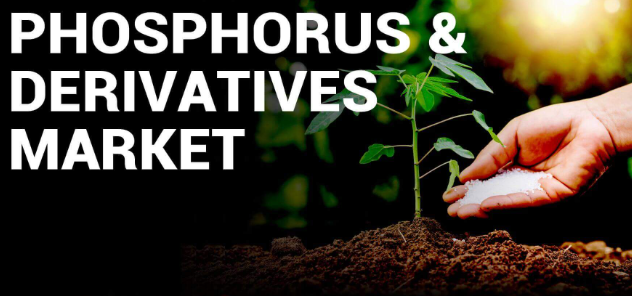Phosphorus (P) is invaluable in a host of industries, including agriculture, food, and detergents, among others. Fertilizer is a pivotal outlet for phosphates while industrial phosphates sought-after in personal hygiene, construction, and food. Lately, the application of detergents has been influence due to environmental pressure. Needless to say, phosphorus and derivatives cater to various needs, including nutrients for body functioning, reducing arable land, growth of Halogen Free Flame Retardants (HFFR), use of biofuels, and burgeoning population.
Fortune Business Insights™ anticipates that the market for phosphorus and derivatives will touch USD 85.01 billion by 2028.
Lithium Iron Phosphate Batteries—a Key Proposition
Stakeholders have started identifying new markets in water treatment and electric vehicles. Lithium Iron Phosphate (LFP) batteries have found increased traction in solar devices, cars, and bicycles. They have become a trendier alternative to lead-acid starter batteries. It is worth noting that these batteries are structurally and environmentally safe. They are comparatively cooler than other batteries and do not heat up easily.
LFP has received a considerable uptick vis-à-vis lead acid batteries and other lithium batteries, partly due to its lightweight, longer life span, charge efficiency, improved discharge, and safety attributes. Although LFP may be price higher, zero maintenance and long life span benefits make the batteries a lucrative investment portfolio. High power density causes lithium iron phosphate batteries to be lightweight and small. With reduced downtime and increased efficiency, lithium-ion phosphate can function in a wide temperature range, making LFP a vital proposition for a range of applications.
Agricultural Phosphorus Gains Ground
Phosphorus and derivatives are instrumental for plant growth, contributing to fruiting, flowering, and root development. They are used to keep up with parameters for plant development, including the processes of photosynthesis and plant respiration. The use of phosphorus from chemical fertilizers has gained a tremendous uptick globally. It is worth mentioning that it helps in plant maturation, root development, and seed development.
It is known that phosphorus and derivatives:
- Promote resistance to winter kill
- Boost resistance to root rot diseases
- Increase root growth
- Propel early plant maturity
- Propel stalk strength
Environmental repercussions of agricultural phosphorus have become pronounce, with concerns being shifted from soils to lakes, rivers, streams, and oceans. Eutrophication could be pronounce due to the transportation of phosphorus from agricultural soils. Eutrophication could lead to reduced dissolved oxygen and increased algal growth. Some of the harmful impacts of eutrophication are:
- Increased cost and difficulty in purifying drinking water
- Increased sedimentation
- Prevalence of insects & pests
- Undesirable odors
Phosphorus in Food and Flame Retardants
Phosphorus has played a vital role in the way the body uses fats and carbohydrates. It is sought for the body to make protein for the maintenance, growth, and repair of tissues and cells. It has became immensely popular in western diets as it is used as an additive in processed foods. Further, it also helps in nerve signaling, kidney function, normal heartbeat, and muscle contractions. Apart from preventing bacteria and mold growth, it gives soft drinks a tangy flavor. Prominently, phosphoric acid is profoundly used in aerated drinks while phosphoric acid derivative is warrant in detergents.
Lately, phosphorus flame retardants have become trendier as a class of additive to boost the fire safety of flammable materials, including textiles, plastics, paper, and wood. In common parlance, flame retardants tend to act in the solid phase and used in housings for IT equipment.
Notably, the ease of flammability of textiles has encouraged stakeholders to inject funds into additives. The use of advanced phosphorus-based flame retardants has become pronounced as an alternative to toxic flame retardant products. Additives of phosphorus and derivatives have exhibited tremendous suitability and high efficiency for various fabrics and fibers.
Sustainable Solutions of Phosphorus and Derivatives Management
There is no denying that phosphorus fertilizers in agricultural land have enhanced crop production and soil fertility; however, potentially low phosphorus use efficiency could pose environmental risks. It could be instrumental in keeping up with the food demand in 2022 and beyond. The caveat is that it has driven the load on the freshwater ecosystem, leading to environmental problems. Sustainability could hold ground in the ensuing period as governments and other stakeholders are to underpin innovative and sustainability-related research & development activities.





